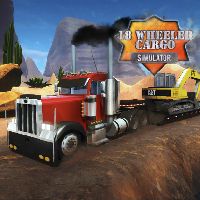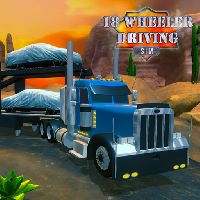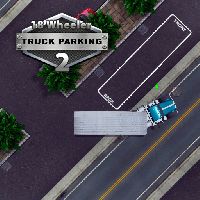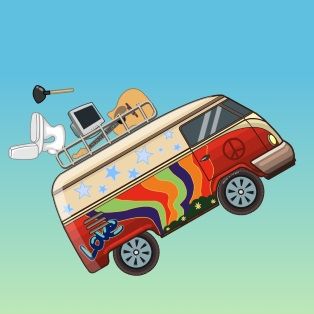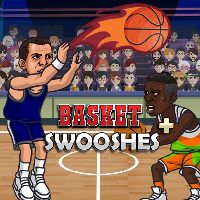HORSE SHOEING
SIMILAR GAMES
Description
Horse Shoeing - Kongregate
About Horse Shoeing - Kongregate
We are thrilled to provide an in-depth look at the world of horse care, focusing on the fascinating skill of horse shoeing. This intricate craft is essential for the health and well-being of equines, and we aim to explore its various facets, from the historical origins to the modern techniques employed today. Our goal is to deliver a comprehensive understanding of horse shoeing, a topic we feel aligns with the spirit of accessible entertainment and engaging content that defines our platform.
The Historical Significance of Horse Shoeing
The practice of horse shoeing has a rich and compelling history. Its roots can be traced back centuries, evolving alongside the domestication and utilization of horses for various purposes. Initially, crude forms of protection were used, such as leather boots or temporary coverings, to shield horses' hooves from wear and tear. Over time, as the importance of horses in warfare, agriculture, and transportation increased, the need for more robust and durable protection became apparent.
The development of the horseshoe as we know it was a gradual process. Early horseshoes were often made of iron or bronze, and they were hammered directly onto the horse's hoof. This technique, while providing some protection, could be painful for the animal and wasn't always effective. The evolution of shoeing techniques mirrors advancements in metallurgy and blacksmithing. Improvements in forge design, the availability of higher-quality metals, and the development of standardized horseshoe designs all contributed to the refinement of the craft.
Understanding the historical evolution of horse shoeing provides context for its significance. The skill of the farrier, the individual who specializes in shoeing horses, became highly valued. Farriers played a crucial role in military campaigns, enabling cavalry units to move efficiently. They were also essential for supporting agricultural practices, ensuring horses could effectively plow fields and transport goods. The historical impact of horse shoeing underscores its vital role in shaping societies and influencing the course of history.
Anatomy and Importance of the Equine Hoof
To fully appreciate the art of horse shoeing, a basic understanding of the horse's hoof anatomy is essential. The hoof is a complex structure that serves multiple vital functions, including shock absorption, weight bearing, and providing traction. It is made up of various components, each with a specific role in maintaining the horse's health and mobility.
The hoof wall, the visible outer layer, is composed of keratin, the same protein found in human fingernails. It protects the sensitive inner structures and provides the hoof's shape. The sole, the underside of the hoof, is a concave surface that supports the horse's weight. The frog, a soft, V-shaped structure at the back of the hoof, acts as a shock absorber and helps with blood circulation.
Internal structures, such as the digital cushion and the coffin bone (also known as the pedal bone), also contribute to hoof function. The digital cushion is a fibrous structure that helps absorb impact. The coffin bone is the primary bone within the hoof and is crucial for weight distribution. Shoeing aims to protect and support these delicate structures.
Proper hoof care, including shoeing, is paramount to the horse's overall well-being. Without adequate protection, hooves are susceptible to damage and injury. Poor hoof conformation, improper shoeing, or neglect can lead to a variety of problems, ranging from lameness to chronic health issues. Therefore, horse shoeing is not simply a cosmetic procedure; it's a fundamental component of equine health management.
The Farrier: A Skilled Craftsman
The farrier is a highly skilled craftsman who specializes in horse shoeing. Their expertise combines knowledge of equine anatomy, blacksmithing techniques, and the art of shoe application. Becoming a farrier requires extensive training and experience, as well as a deep commitment to the welfare of the animals they serve.
Farriers undergo apprenticeships, training programs, and continuing education to hone their skills. They must learn to assess the horse's hoof, trim it correctly, select the appropriate shoe, and apply the shoe in a manner that promotes optimal foot function. The process of shoeing is a meticulous one, demanding precision and a keen eye for detail.
Beyond the practical skills, a farrier must also possess a strong understanding of equine biomechanics. They need to understand how the horse moves, how the hoof interacts with the ground, and how different shoeing techniques can impact the horse's gait and performance. Farriers often work in collaboration with veterinarians to address specific hoof-related problems.
The relationship between the farrier and the horse is essential. A good farrier will be patient, compassionate, and attentive to the horse's needs. They will take the time to build trust and ensure the horse is comfortable and relaxed throughout the shoeing process. The dedication and expertise of farriers are crucial to maintaining the health and well-being of horses.
The Horse Shoeing Process: A Step-by-Step Guide
The horse shoeing process involves several distinct steps, each critical to ensuring the proper fit and function of the shoe. While techniques may vary slightly depending on the horse and the farrier's preferences, the general procedure remains consistent.
- Preparation: The farrier begins by cleaning the horse's hoof and removing any existing shoes. The farrier will then assess the hoof's condition, looking for any signs of damage, disease, or imbalance.
- Trimming: Using specialized tools, the farrier trims the hoof. The goal is to restore the correct balance and proportions of the hoof. The trim should ensure even weight distribution and prepare the hoof for the application of the new shoe.
- Shoe Selection: Based on the horse's size, breed, activity level, and any specific needs (e.g., corrective shoeing), the farrier selects the appropriate shoe. Shoes come in various shapes, sizes, and materials, with specific designs for different purposes.
- Shoe Modification (if needed): In some cases, the farrier may need to modify the shoe to ensure a perfect fit. This could involve reshaping the shoe, adjusting its size, or adding special features, such as clips or pads.
- Shoe Application: The farrier positions the shoe on the trimmed hoof. They then carefully nail the shoe to the hoof wall, using specialized nails designed to minimize trauma to the hoof. The nails are driven in at a specific angle to secure the shoe without penetrating the sensitive inner structures.
- Finishing: Once the shoe is in place, the farrier clinches the nails, bending them over to secure them and prevent them from catching on objects. The farrier may also rasp the hoof wall to smooth the edges and ensure the shoe is flush with the hoof.
- Assessment: Finally, the farrier will evaluate the horse's gait and check for any signs of discomfort or imbalance. They may also provide the owner with advice on hoof care and maintenance.
The entire shoeing process requires skill, precision, and attention to detail. It is a testament to the farrier's expertise in providing care for the equine foot.
Types of Horseshoes: Materials and Designs
Horseshoes are available in a wide variety of materials and designs, each tailored to specific needs and purposes. The choice of shoe depends on factors such as the horse's breed, activity, hoof conformation, and any underlying health conditions.
Steel shoes are the most common type. They are durable, affordable, and provide excellent protection for the hoof. Steel shoes are suitable for various activities, from pleasure riding to competitive events. They can be easily modified by the farrier to meet specific requirements.
Aluminum shoes are lighter than steel shoes, making them a popular choice for racehorses and other performance horses. The reduced weight can improve speed and agility. Aluminum shoes are less durable than steel but provide an excellent option for specific sporting disciplines.
Specialty shoes are designed to address specific hoof problems or to enhance performance. Examples include shoes with pads to protect the sole, shoes with elevated heels for certain conformations, and shoes with studs for improved traction on various surfaces.
Synthetic shoes, made from various plastics or polymers, are becoming increasingly popular. These shoes offer lightweight, good shock absorption and can be shaped easily. They are beneficial for horses with sensitive feet or specific medical conditions. The diversity in shoe designs offers many options for equine foot care.
Common Horse Hoof Problems and Shoeing Solutions
Horses are prone to various hoof problems, some of which can be addressed or alleviated through appropriate shoeing techniques. Understanding these issues and the corresponding shoeing solutions is critical for equine health management.
Laminitis, a debilitating condition, causes inflammation of the laminae, the tissues that connect the coffin bone to the hoof wall. Shoeing plays a crucial role in managing laminitis. Specialized shoes, such as those with increased sole support or those that reduce stress on the hoof wall, can help alleviate pain and promote healing.
Navicular syndrome is a chronic condition that affects the navicular bone, a small bone in the foot. Shoeing can provide support and cushioning for the navicular area. Techniques include using shoes with pads, elevating the heels, or employing shoes that help improve blood flow to the foot.
Thrush is a bacterial infection that affects the frog. Proper hoof trimming, hygiene, and sometimes shoeing modifications can help prevent and treat thrush. Shoes that promote ventilation and prevent the buildup of moisture can be beneficial.
Cracked hooves, a frequent issue, can occur for various reasons, including poor hoof care, improper trimming, or environmental factors. Shoeing can stabilize cracked hooves by providing support to the hoof wall and preventing further damage. Shoes with clips and other features can assist with the repair process.
Shoeing is not a one-size-fits-all solution. Each horse's situation is unique. A skilled farrier will assess the individual needs of the horse, consult with a veterinarian when appropriate, and apply the most suitable shoeing techniques to resolve and manage a variety of hoof-related concerns.
Shoeing for Performance: Optimizing Gait and Traction
In addition to protecting the hoof, shoeing can be used to enhance a horse's performance in various disciplines. The goal is to optimize gait, improve traction, and provide support for the horse's athletic endeavors.
In equestrian sports, such as dressage and show jumping, shoeing can influence the horse's movement and balance. Farriers may utilize shoes that encourage a particular stride or that help the horse maintain its balance during complex maneuvers.
For racehorses, shoeing is critical for providing the necessary traction and protection to withstand the high forces of running. Studs and other features may be added to the shoes to provide a grip on the track surface.
For horses involved in other activities, such as trail riding or working on rough terrain, shoeing can enhance traction and protect the hooves from wear and tear. The choice of shoe will depend on the type of terrain and the horse's specific needs.
The relationship between the farrier and the horse's trainer or owner is particularly important. The farrier needs to understand the requirements of the discipline and tailor the shoeing to meet the horse's specific needs and goals.
Preventative Hoof Care and Maintenance
While shoeing is a critical aspect of hoof care, it is only one component of a comprehensive approach. Regular hoof maintenance is crucial for keeping horses healthy and preventing hoof problems.
Regular trimming, usually every 6 to 8 weeks, is essential for maintaining hoof balance and removing excess growth. The farrier will trim the hooves to ensure the proper weight distribution and prevent imbalances that could lead to problems.
Daily hoof cleaning is also a crucial habit. Removing dirt, debris, and moisture from the hoof helps prevent infections and thrush. Using a hoof pick to clean out the sole and frog is a good practice.
Environmental management plays a role in hoof health. Providing clean and dry living conditions, such as well-drained pastures or stalls, can help prevent hoof problems. Moisture and the presence of bacteria can contribute to hoof infections.
Nutrition is essential for healthy hooves. A balanced diet that provides adequate vitamins and minerals is critical for hoof growth and quality. Biotin, in particular, is often supplemented to support healthy hooves.
Taking a holistic approach to hoof care, including regular shoeing, trimming, cleaning, environmental management, and nutrition, will help owners keep their horses healthy and performing well.
Where to find Information About Horse Shoeing
To learn more about horse shoeing, we encourage you to explore the resources available to learn more about this field.
Professional farriers' associations, offer invaluable resources, including educational materials, directories of qualified farriers, and training programs. These associations uphold standards of practice and provide continuing education opportunities for farriers.
Veterinary resources, often offer information on hoof health and the relationship between shoeing and equine health. Veterinarians can provide insights on hoof problems and the appropriate shoeing techniques.
Online resources such as articles, videos, and forums can provide valuable information. However, it's essential to critically evaluate the information and consult with qualified professionals for expert advice.
We hope this exploration of horse shoeing has been enlightening and has enhanced your knowledge. The well-being of horses relies on a partnership of knowledgeable owners, skilled farriers, and dedicated professionals. We believe that our platform is a fitting place for knowledge sharing and entertainment, and we are excited to continue providing engaging content.
Discover Kongregate, your go-to destination featuring thousands of top-notch unblocked games designed for pure enjoyment. We provide an ad-free experience, ensuring uninterrupted fun that’s easy to access from any location—be it school, work, or home. Dive into our collection of Kongregate-inspired, HTML5-based titles and enjoy seamless gameplay directly in your browser, crafted for maximum convenience and excitement.
How to Play Unblocked Games on Kongregate
Getting started with Kongregate at GitLab Games is simple and delivers instant fun. Follow these steps to access our vast library of unblocked games:
- Visit Kongregate at Kongregate.
- Browse our extensive collection of Kongregate-style titles.
- Click on your favorite game to launch it instantly in your browser—no downloads or installations required.
Our games are engineered to access school and workplace limits, allowing you to play seamlessly from any location, anytime, anywhere.
Game Controls for Effortless Fun
Mastering our unblocked games is a breeze with Kongregate’s intuitive setup. Use your keyboard for precise movements and actions or rely on simple mouse clicks, depending on your preference. Popular titles like 1v1 LOL unblocked games 76 and slope unblocked games 76 are optimized for smooth, ad-free gameplay, ensuring you can dive into the fun without distractions.


